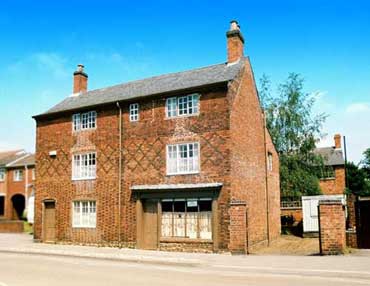Preserving the Heritage
The decline of the East Midlands knitting industry and the relocation of companies has left a wealth of empty buildings in town and cities.

Wigston Framework Knitters Museum in Leicestershire
Alternative uses for some of these structures have helped to preserve them and ensure that the industry's built heritage survives. Conversion to flats has regenerated city centre sites and provided valuable living accommodation. Between 1996 and 2002, 49 of the 84 conversion schemes submitted to Leicester City Council involved factories and warehouses. Student housing accounted for 32 of the 84 schemes and provided accommodation for 5,698 students.
Buildings have also found commercial uses. For example, West Bridge Mills on the banks of the River Soar in Leicester was built in 1850 as a worsted spinning factory and in the twentieth century the building was used for knitting. Known as the Pex factory, the building suffered a serious fire in 1979. In the late 1990s the building was converted to office accommodation and now houses the Land Registry.
Museums telling the story
Buildings across the Region associated with the knitting industry have been opened as museums and allow the public to access the industry's past. The Ruddington Framework Knitters Museum in Nottinghamshire opened in 1971 as a small independent working museum. The museum's site consists of frameshops, workers' cottages and outbuildings built around a courtyard. Visitors to the museum can return to the nineteenth century when they visit, witnessing the living conditions of the tens of people that would have lived and worked in the cramped conditions. Staff and volunteers at the museum have learnt how to operate and maintain the knitting technology of the period and regularly provide demonstrations.
Wigston Framework Knitters Museum in Leicestershire is based in a master hosier's house complete with a two storey frameshop built in the garden. The site records the development of three knitting workshops during the nineteenth century. A two storey workshop extension was added to the rear of the house early in the century, followed by a single storey frameshop (second half of the nineteenth century) and the two storey frameshop (1890). Frames and yarn winders can be seen and heard in action. Each year the museum trustees present a pair of socks to the mayor of Wigston in payment of the rent for the site, which is owned by the local council.
Calverton Museum in William Lee's Nottinghamshire home village is housed in a framework knitter's cottage. Evidence of the wide windows that provided light by which the framework knitter could work, can still be seen.
Belper North Mill (Derwent Valley Visitor Centre) and Masson Mills in Derbyshire both supplied the knitting industry with yarn. Today museums preserve machinery and objects relating to the industry in the setting of the mill buildings. The heritage of Jedediah Strutt and Richard Arkwright lives on.
Find out how to visit these museums.
Heritage at work
Knitting machines from the nineteenth century continue to work commercially in the twenty first century. Martin Green of Kirby Muxloe, Leicestershire produces fine lacy wraps, shawls, stoles, squares and scarves on a Lee-type frame. Eleganti Ltd of Moorgreen, Nottinghamshire has renovated Cotton machines and brought them back into production. With the expertise of Bill Partridge, a former manager with Atkins of Hinckley, the correct conditions have been provided in the factory to ensure the Cottons work effectively.